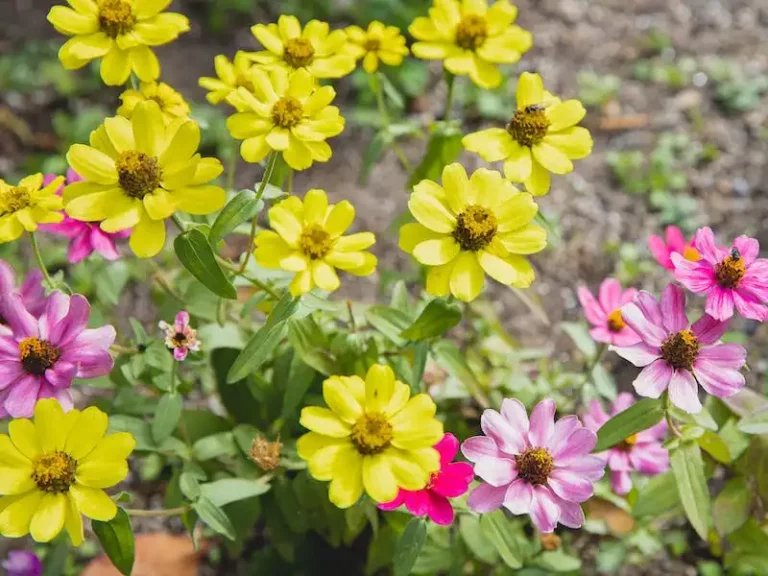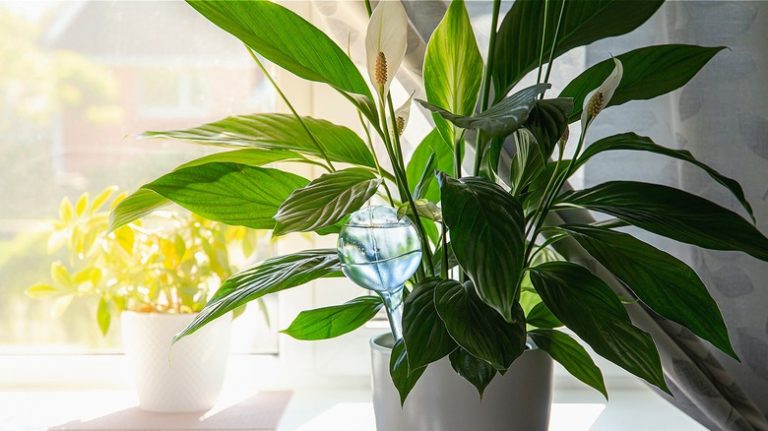Once your amaryllis bulbs have finished blooming, it’s important to know how to provide proper care in order for them to rebloom in the future. After the flowers have withered and the stalk has been cut back, you can continue to enjoy their graceful foliage. They can be placed in a sunny window, where they will continue to grow and store food for next year’s bloom.
In order to prepare your amaryllis for a period of dormancy, it’s crucial to gradually finish watering and fertilizer supply. Reduce water and food gradually over a period of four to six weeks, allowing the foliage to gradually wither. During this time, it’s essential to acclimate the plant to lower temperatures and less light, as this will encourage the bulbs to go dormant.
Caring for amaryllis bulbs during their dormant period is relatively easy. They can be placed in a cool, dry location such as a closet or basement, where temperatures should be between 40 and 50 degrees Fahrenheit. Check the bulbs regularly for signs of rot or disease, and remove any affected bulbs in order to prevent spread.
In early spring, when you are ready for your amaryllis to bloom again, you can bring them out of dormancy and into a warm and sunny spot. At this point, you can start watering the bulbs again and provide a balanced, all-purpose fertilizer. Within a few weeks, you should start to see new growth and the flower stem will appear. Soon, the beautiful blossoms will be back in full force.
Growing and caring for amaryllis
The growth and care of amaryllis plants is relatively easy, making them a popular choice for many gardeners. Here’s what you need to know about growing these beautiful flowers:
How to grow: Amaryllis bulbs can be planted either indoors or outdoors. If you choose to plant them indoors, you can enjoy their blooms during the winter months. To plant, place the bulbs in a container with well-draining soil and position them so that about a third of the bulb is above the soil line.
Watering and fertilizing: Amaryllis plants should be watered thoroughly after planting and then watered sparingly until growth begins. Once the stalks and leaves appear, you can increase the amount of water. It’s also important to fertilize regularly during the blooming period to ensure healthy growth. Use a balanced fertilizer with a higher nitrogen content.
Development and blooming: Amaryllis plants typically take about six to eight weeks to develop and bloom. They will open one or two flowers per stalk, with each flower lasting for several days. When the flowers have faded, you can remove them to encourage new growth.
Care after blooming: After the blooming period is finished, amaryllis plants can continue to grow and develop foliage. It’s crucial to keep the plants well watered and placed in a sunny window to promote healthy growth. Avoid direct sunlight and temperatures below 10 degrees Celsius to prevent damage.
Reblooming: Amaryllis plants can be encouraged to rebloom by following a few simple steps. After the blooming period, you can move the plants to a cool location, such as a closet or basement, for about two months. During this time, the plants should only be watered sparingly. In late july, you can gradually move the plants back into a sunny window and resume regular watering. With proper care, the bulbs will rebloom in about eight to ten weeks.
Pruning and containers: Pruning is not necessary for amaryllis plants, but removing any yellow or dead leaves can help keep the plant healthy. Amaryllis bulbs can be grown in various containers, but make sure they have drainage holes to prevent overwatering. Plastic or ceramic pots work well, as long as they are at least 15 centimeters in diameter.
Tips and tricks:
| 1. | If you want your amaryllis to bloom around Christmas, you should plant the bulbs in late spring or early summer. |
| 2. | Amaryllis plants prefer bright, sunny locations, but be careful not to expose them to direct sunlight for long periods. |
| 3. | Regularly check the foliage for signs of pests or disease. If infested, treat them accordingly. |
| 4. | Amaryllis bulbs can easily be purchased from a local garden shop or online. |
| 5. | After-bloom care is important to ensure the bulbs remain healthy and ready for the next blooming period. |
In summary, growing and caring for amaryllis plants is relatively simple if you provide them with the right conditions. Remember to water and fertilize them properly, keep them in a sunny location, and follow the tips mentioned here. With a little care and attention, your amaryllis plants will thrive and attract attention with their vibrant blooms.
Amaryllis Post Care Instructions
After your amaryllis blooms finish flowering during the Christmas season, it is important to provide proper care to ensure their long-term health and rebloom. Here is a guide on how to care for your amaryllis after it has finished blooming:
| Step | Instructions |
| 1. | Cut down the flower stalks: |
| Once the blooms have faded, use clean scissors or pruning shears to cut the flower stalks down to about an inch above the bulb. This helps redirect the plant’s energy towards foliage growth. | |
| 2. | Inspect for pests: |
| Check the foliage and bulb for any signs of pests or diseases. If you notice any, remove them carefully to prevent further damage to the plant. | |
| 3. | Provide regular care: |
| Continue watering your amaryllis regularly, about once every three weeks. Use well-draining soil and place the plant in a sunny location. | |
| 4. | Fertilize your amaryllis: |
| Apply an all-purpose fertilizer every three to four weeks to promote healthy growth. Use a fertilizer with a higher nitrogen content during the growing season to encourage foliage development. | |
| 5. | Move your amaryllis outside (optional): |
| If you live in a warm climate, you can choose to move your amaryllis outside during the summer months. Just make sure to gradually acclimate it to the outdoor conditions. | |
| 6. | Bring your amaryllis back indoors: |
| As temperatures start to drop in the fall, bring your amaryllis back indoors and place it in a cool, dark location like a closet or basement for about 8-10 weeks. This period of dormancy is important for reblooming. | |
| 7. | Resume regular care: |
| After the dormant period, move your amaryllis to a sunny spot, resume regular watering, and provide regular fertilizer. This will stimulate new growth and flower development. | |
| 8. | Watch for signs of reblooming: |
| As spring approaches, your amaryllis should start showing signs of new growth. Keep an eye out for the emergence of new flower stalks, which will eventually bring forth new blooms. |
Following these post-care instructions will help ensure that your amaryllis remains healthy and produces beautiful blooms year after year.
Shop all Amaryllis Bulbs >
In order to keep your amaryllis plant healthy and blooming for many years, it is important to provide proper care and follow the post care instructions. Below is a summary of the important instructions:
| After-Bloom Cycle: | After the flowers have faded, remove the stalks and continue to water the plant. This period is crucial for the plant to store energy for future blooming. |
| Watering: | Water the amaryllis regularly during the growing season, but be careful not to overwater. Allow the soil to dry out slightly between waterings. During the dormant period in summer, reduce watering and only water when the soil is completely dry. |
| Fertilizer: | Use an all-purpose, balanced fertilizer to supply nutrients to the plant. Fertilize every two weeks during the growing season. Stop fertilizing during the summer dormancy period. |
| Temperature: | Keep the amaryllis in a warm location with temperatures between 65-75 degrees Fahrenheit (18-24 degrees Celsius) throughout its life cycle. Avoid placing the plant in drafty areas or near temperature extremes. |
| Light: | Place the amaryllis in a window that receives bright, indirect sunlight. Too much direct sunlight can cause the leaves to burn. |
| Pruning: | Remove any yellow, withered, or infested leaves to maintain the plant’s health. Prune discolored stalks after blooming to prevent the spread of diseases. |
| Force Blooming: | If you want your amaryllis to bloom during a specific time, follow the necessary preparation and forcing instructions. Late planting can delay the flowering period. |
| Storing: | If you want to store the bulbs for future use, allow the leaves to die down naturally, then carefully dig up the bulbs. Clean and dry the bulbs, and store them in a cool, dry place until ready for planting. |
| Rebloom: | To encourage reblooming, provide the amaryllis with a period of dormancy by reducing watering and light exposure. After this period, gradually increase watering and light to acclimate the plant to flowering again. |
| Prevent Frost Damage: | If grown outside, bring the amaryllis indoors when temperatures drop below 50 degrees Fahrenheit (10 degrees Celsius). Frost can damage the plant and prevent future blooms. |




